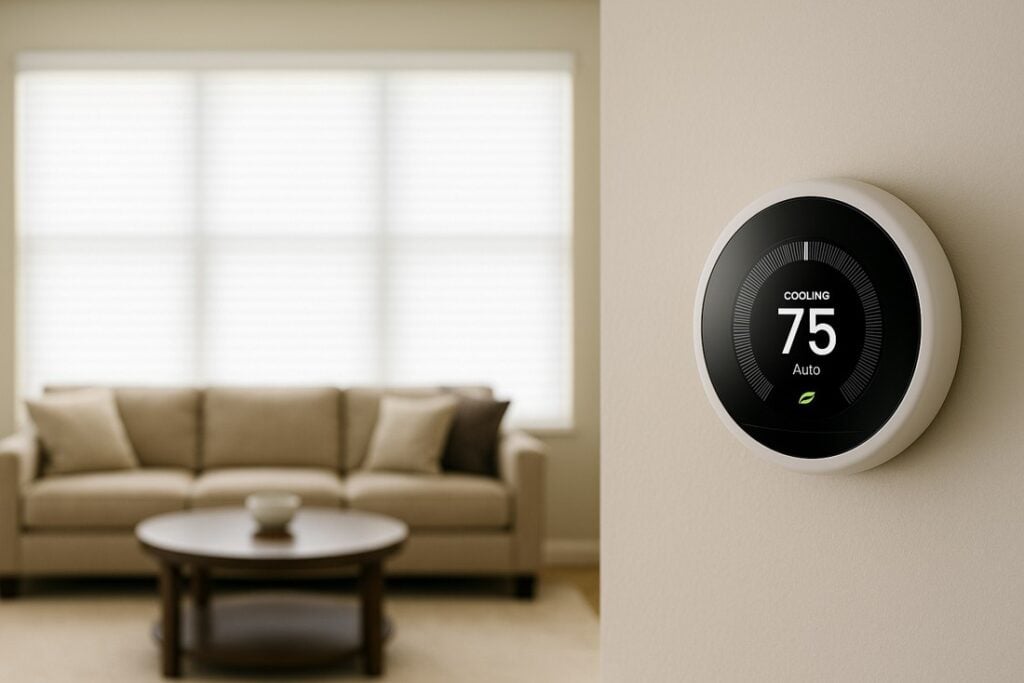Blog
Florida AC settings for the dry season: best thermostat tips for comfort and savings

When the air turns drier and nights finally cool off, your system does not need to run like it did in August. With the right Florida AC settings, you can hold comfort with shorter cycles and a calmer system. The dry season changes how temperature feels because humidity drops and mornings start cooler. A few smart adjustments to setpoints, schedules, and fan mode keep rooms steady without constant tinkering. If comfort still drifts after you try these steps, a focused visit for AC repair can confirm that airflow and controls are working as they should.
Why the dry season changes comfort
Humidity drives how warm air feels. When moisture falls, sweat evaporates faster, so the same number on the thermostat can feel cooler. That is why seventy five may feel comfortable now when it felt warm in peak summer. Aligning your Florida AC settings with current conditions prevents short cycling and avoids big swings between morning and evening.
Daytime setpoints that work
Aim for a steady daytime target rather than big jumps. Many Florida homes feel right at seventy five to seventy six because lower moisture keeps air feeling crisp. If a room with large windows warms after lunch, lower the setpoint by one degree between two and four. Small moves are easier on the compressor and limit recovery runs.
Build a simple schedule with three or four periods. Morning clears stale night air, midday holds steady, and evening allows a mild change for cooking and guests. Overnight, bump the setpoint up one degree if bedrooms tend to feel chilly. Give each change a few days so you judge the average, not a single cool front.
Humidity and night comfort
Comfort is the blend of temperature and moisture. In the dry season, chasing very low humidity can backfire. Targets that are too low lengthen cycles and make rooms feel papery. If your control lets you set humidity, choose a moderate value that matches a calm day.
Cooler nights are a chance to save. Add a small upward bump to the night schedule so bedrooms do not feel crisp. If air feels stale before bed, schedule a short fan circulation window. When one room stays muggy while others feel fine, call for AC repair to check for duct leaks or return problems.
Smart thermostat plans that stay simple
Smart thermostats are powerful, but the best plan is simple. Use four anchor periods at most. Morning clears the night, midday holds steady, evening can drop for activity, and overnight can nudge warmer if bedrooms get cold. Lean on gentle pre cool rather than big swings. Be cautious with learning features at first. Homes with lots of glass or irregular occupancy can confuse auto learning. Start with manual schedules for two weeks, then enable learning if results look stable.
Fan mode and airflow basics
Keep the fan on Auto for most homes. Auto runs the blower only during cooling, which preserves the temperature you paid for. Fan On can move warm coil air back into rooms between cycles and can lift indoor humidity. If you like a hint of movement, try a brief scheduled circulation window. Airflow is the backbone of every setting. Open supply vents, clear return grilles, and use a properly fitting filter. If airflow feels weak, a technician can measure static pressure during an AC repair visit.
Two quick wins that help every schedule
- Control sun in the hottest rooms. Close blinds or light curtains on south and west windows during peak sun. This step can peel a few degrees off afternoon spikes without touching the thermostat. Shorter cycles and smaller peaks mean your setpoint holds with less effort, and the evening transition feels smoother. If one bright room still overheats, a reflective shade or film can cut the harshest rays and bring the space back in line with the rest of the home.
- Manage indoor heat sources. Ovens, dryers, and long hot showers add heat and moisture that your system must remove. Run heat heavy appliances earlier in the day or after sunset when outdoor temperatures are lower. Always use bath fans during and after showers so moisture does not drift into living areas. These simple choices keep load flat, which lets your settings hold steady instead of triggering extra cycles.
When settings are not enough
If you keep adjusting and comfort still slips, look for root causes. A thermostat in direct sun misreads the room and forces starts and stops. Duct leaks spill cool air into the attic, so rooms never see the cooling you paid for. An AC repair visit can test components and confirm that airflow is healthy. If replacement is on the horizon, variable speed systems paired with smart controls hold temperature and humidity with smaller, quieter cycles. Our AC installation team can size the system correctly and set up controls so your schedule is effective.
The bottom line
The dry season rewards a lighter touch. Set a realistic daytime target, make small scheduled adjustments, keep the fan on Auto, and let moderate humidity work. Block afternoon sun and limit indoor heat when you can. If comfort still drifts, call FL Air Heating & Cooling at 813-800-2665 for targeted AC repair or to discuss smarter controls through AC installation. With the right Florida AC settings, your home stays steady without long, costly run times.








